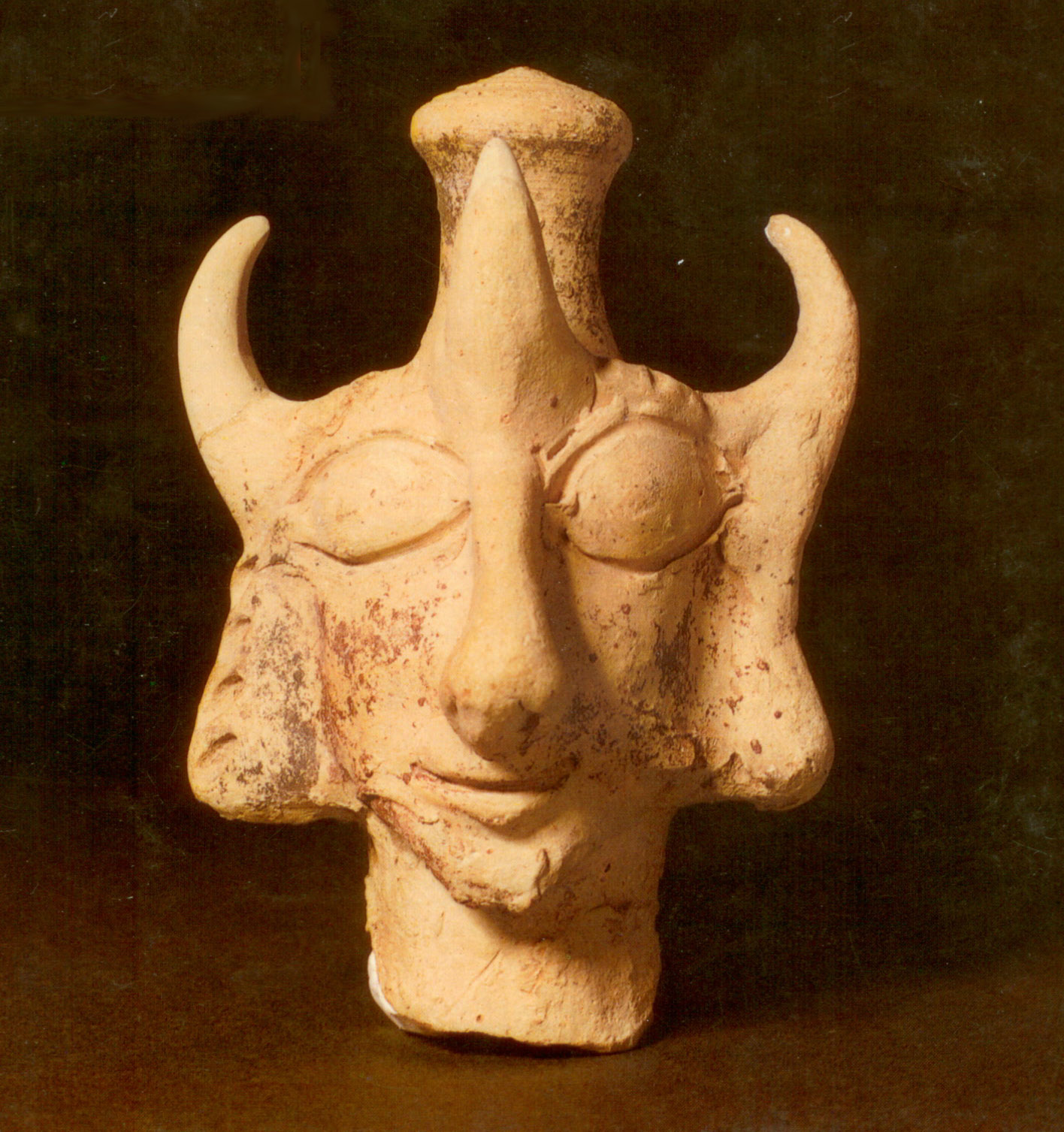Edomite Horned Figure, 7th-6th century BCE
The horned headdress, which is the divine crown par excellence in the ancient Near East, identifies the figure as a deity. A comparison with the various statuettes found at Qirmit makes it possible to identify this particular head as the head of a goddess rather than of a god.
The head, including the prominent knob on top and the neck, is wheel-made. It is fashioned in the shape of the well-known rattle found at many Iron Age sites.
Pieces modeled by hand were then applied to mark the facial features, hairdress and horns. Traces of their untidy application are visible on the back of the head, the chin and the neck. The face is painted red, and the hair is black.
The asymmetry of the face is particularly noticeable in the unequal eyes; they were incised on bits of clay that were then applied to the face. Again, there is no symmetry in the eyebrows and locks of hair. This lack of symmetry is also evident in the modeling of the mouth, which gives the face a lively expression enhanced by a captivating smile.
A divine mitre with three horns is quite rare and is known only on metal statuettes representing armed goddesses said to have come from Syria or Phoenicia. One such figurine was found in Galilee. However, none of these statuettes comes from controlled excavations. Hence the head from Qitmit may be of importance in reevaluating these metal pieces.
The meaning of the third horn is not clear. Some scholars consider it to be a remnant of the uraeus worn on the forehead by the Egyptian pharaohs. Another possible explanation would seek its origin in the third horn on the headdress of the “Syrian goddess,” known from Syrian cylinder seals of the second millennium.
Any attempt to identify the goddess meets with difficulties, as the statue is incomplete and her attributes are unknown. Moreover, there is no certainty that she was the sole deity worshipped at the site. Any tentative attempt at identifying the goddess would have to rely on comparisons with similar statuettes and on other objects, found at the site, that may be considered part of her cult.
Pirhiya Beck, “Head of a Goddess,” BAR 14-02, Mar-Apr 1988.
See also-




